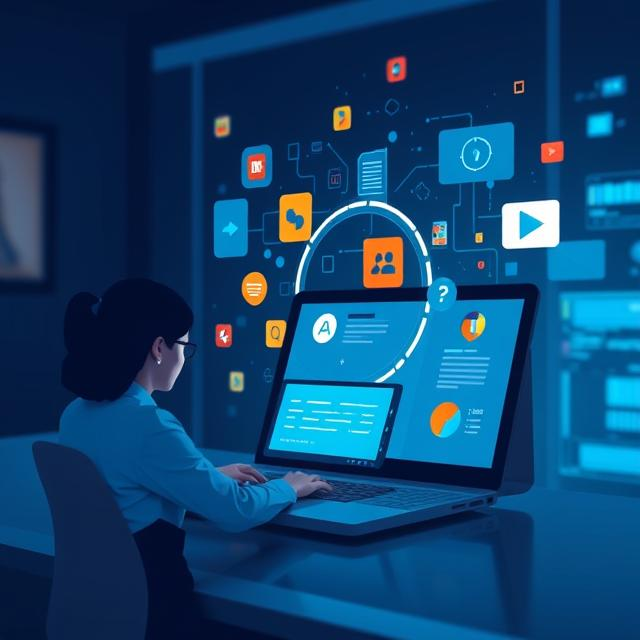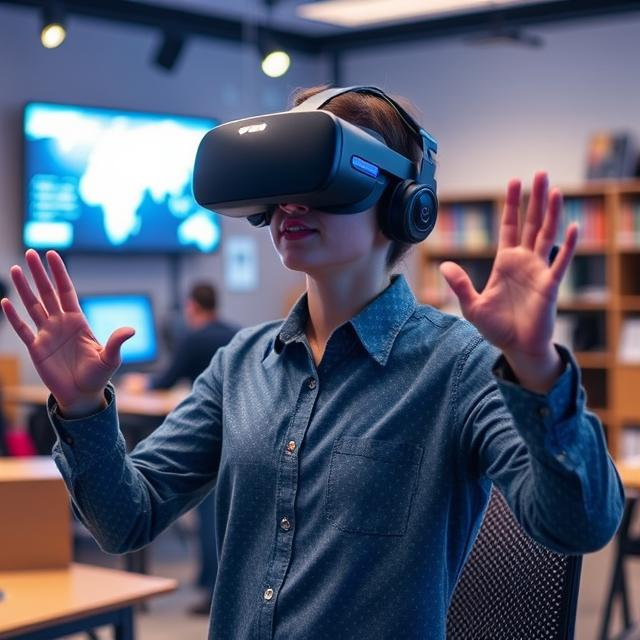The role of Artificial Intelligence (AI) in modern education is rapidly evolving and reshaping the way students learn, teachers teach, and institutions manage educational processes. AI is enhancing accessibility, personalizing learning experiences, automating administrative tasks, and supporting teachers and students in ways that were not possible a decade ago. Here’s a breakdown of the major ways in which AI is playing a transformative role in education today:
1. Personalized Learning
AI helps in creating personalized learning experiences by adapting the content and pace of lessons to meet the unique needs of individual students. With AI-powered platforms, learning materials and assignments are tailored based on a student’s learning style, strengths, weaknesses, and pace. This ensures that each student receives a customized education, which improves engagement and learning outcomes.
Examples:
- Adaptive learning platforms like DreamBox and Knewton analyze a student’s progress and adjust the difficulty of lessons or offer additional resources to help them master specific concepts.
- AI tutors can provide on-demand help for students struggling with certain topics, offering tailored explanations and exercises.
2. Intelligent Tutoring Systems
AI-powered intelligent tutoring systems (ITS) mimic one-on-one tutoring by offering personalized assistance outside of classroom hours. These systems can provide real-time feedback, assess student understanding, and offer practice problems based on a student’s current knowledge level.
Examples:
- Socratic by Google: A mobile app that uses AI to help students solve problems and understand concepts by scanning the question or problem using their phone camera and offering solutions.
- Carnegie Learning: Uses AI to give immediate feedback on students’ math exercises, adjusting to their learning styles and areas of weakness.
3. Automating Administrative Tasks
AI can handle administrative work, freeing up time for educators to focus more on teaching. From grading assignments to scheduling, AI tools can reduce the time and effort teachers and administrators spend on non-teaching tasks.
Examples:
- Grading Automation: AI can grade multiple-choice tests, short-answer questions, and even essays. For example, Gradescope uses AI to help instructors grade exams and assignments more efficiently.
- Scheduling: AI systems can optimize class schedules, track student attendance, and even allocate resources such as classroom spaces.
4. Enhancing Engagement and Interaction
AI can facilitate more engaging and interactive learning environments by integrating with educational games, simulations, and virtual environments. These tools use AI to create dynamic, interactive learning experiences where students actively participate in their education rather than passively absorbing content.
Examples:
- AI-powered games and simulations can make complex subjects like science, history, or math more engaging. For instance, platforms like Labster use AI to offer virtual labs, allowing students to experiment with scientific concepts in a virtual environment.
- Chatbots: AI-powered chatbots, such as Duolingo’s chatbot for language learning, can engage students in conversations and help them practice skills in real-time.
5. Enhancing Teacher Support
AI can help teachers by providing insights into student performance and identifying areas where students may need additional attention. AI tools can analyze data from student interactions, assignments, and tests, giving teachers valuable feedback on class progress.
Examples:
- AI-driven analytics can highlight which students are falling behind, enabling teachers to take proactive action.
- Tools like Classcraft allow teachers to track student behavior, engagement, and performance, offering personalized insights into how to best support their students.
6. Bridging Language and Cultural Barriers
AI-powered translation tools and speech recognition technologies are helping break down language barriers in education, making learning accessible to students from diverse linguistic backgrounds. These tools enable students to learn in their preferred language or assist non-native speakers in comprehending lessons.
Examples:
- Google Translate and DeepL: AI-driven language translation tools are helping students and teachers communicate across language barriers in real-time.
- Speech-to-text technologies: AI tools like Otter.ai can transcribe lectures or conversations in real time, helping students with hearing impairments or those learning a new language.
7. Data-Driven Insights and Predictive Analytics
AI can collect and analyze large amounts of data from students’ learning behaviors, helping educators and institutions predict outcomes and make informed decisions about curriculum design, student performance, and even future career paths.
Examples:
- Learning Management Systems (LMS) like Moodle and Blackboard integrate AI to provide teachers with analytics on how students are engaging with materials and assignments, allowing them to make necessary adjustments.
- Predictive analytics tools can help identify students who may be at risk of failing or dropping out, allowing for early interventions to provide additional support.
8. Accessibility and Inclusivity
AI can help make education more inclusive for students with disabilities. AI-powered tools can adapt content to various accessibility needs, such as providing text-to-speech, speech-to-text, or visual aids.
Examples:
- AI-powered text-to-speech tools like Kurzweil 3000 or Speechify can read out educational material to students with dyslexia or visual impairments.
- Speech recognition tools, such as Microsoft’s Dictate, assist students with writing disabilities by transcribing their spoken words into written text.
9. Virtual Classrooms and Learning Environments
AI can support remote and hybrid learning environments by creating dynamic virtual classrooms. Through AI, these platforms can adapt to the needs of students in real time, providing personalized experiences even in an online setting.
Examples:
- AI-driven virtual tutors or assistants can interact with students during online lessons, answering questions and guiding them through lessons.
- Virtual Reality (VR) and Augmented Reality (AR), combined with AI, create immersive learning experiences. ClassVR provides students with virtual field trips, and AltspaceVR allows teachers to hold lessons in a fully virtual space.
10. Lifelong Learning and Career Development
AI helps facilitate continuous learning by recommending personalized courses or learning paths based on career goals and interests. This is particularly important for adult learners or those in need of upskilling to stay competitive in the job market.
Examples:
- Platforms like Coursera, Udemy, and LinkedIn Learning use AI to recommend courses based on past learning, career interests, and emerging skills in various industries.
- AI-driven career coaching platforms such as CoachHub use algorithms to assess skills, match users with mentors, and provide personalized career advice.
Challenges and Considerations
While AI presents numerous opportunities in education, there are also challenges that need to be addressed:
- Privacy and Data Security: AI relies heavily on data, raising concerns about the privacy and security of students’ personal information.
- Bias in Algorithms: AI systems can unintentionally perpetuate biases if not properly trained, leading to unfair outcomes for certain groups of students.
- Teacher Training: Teachers may need additional training to integrate AI tools effectively into their teaching methods.






